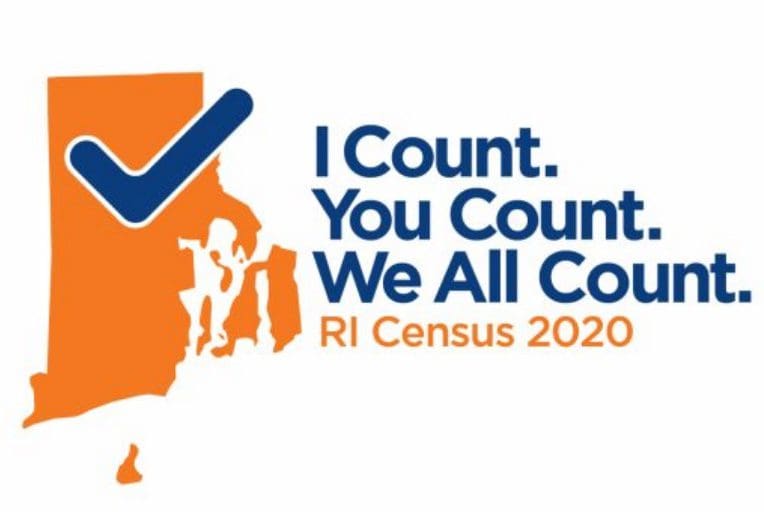Search Posts
Recent Posts
- ART! Cape Verdean Art at New Bedford Whaling Museum June 3, 2025
- Brown University Health names Samuel M. Mencoff Chair of the Board June 3, 2025
- Rhode Island Weather for June 3, 2025 – Jack Donnelly June 3, 2025
- Senior Agenda Coalition of RI pushes wealth tax to fund programs for older residents – Herb Weiss June 2, 2025
- How will Artificial Intelligence (AI) impact the future of work – Mary T. O’Sullivan June 2, 2025
Categories
Subscribe!
Thanks for subscribing! Please check your email for further instructions.

2020 Census Impacts Programs for Older Americans
2020 Census Impacts Programs and Services for Older Americans
By Herb Weiss, contributing writer on aging
By April 1, every home across the nation will receive an invitation from the U.S. Census Bureau, a nonpartisan government agency, to participate in the 2020 Census. Once this invitation arrives, it’s important for you to immediately answer the short questionnaire by either going on-line, phone, or by mail. When you respond to the census, you’ll tell the Census Bureau where you live as of April 1, 2020.
The U.S. Constitution: Article 1, Section 2, mandates that the country conduct a count of its population once every 10 years. The 2020 Census will mark the 24th time that the country has counted its population since 1790.
The population statistics generated by the upcoming 2020
Census will be used to distribute over $700 billion annually in federal funds
back to tribal, state and local governments. The collected census data also
determines the number of seats each state has in the U.S. House of
Representatives, provides insight to governments, business and community
planning groups for planning purposes, and finally defines congressional and state
legislative districts, school districts and voting precincts.
2020 Census Statistics and the Graying of America
According to a blog story published on Dec. 10, 2019, by American Counts (AC) Staff, the upcoming 2020 Census will provide the federal government with the latest count of the baby boom generation, now estimated at about 73 million. The boomer generation born after World War II, from 1946 to 1964, will turn 74 next year. When the 2010 census was taken, the oldest had not even turned 65.
Baby Boomers are also projected to outnumber children under age 18 for the first time in U.S. history by 2034, according to Census Bureau projections. With an increasing need for caregiver and health services and less family caregiver support, the boomers will be forced to depend on federally funded support services, their allocation depending on policy decisions based on census data.
“Data from the 2020 Census will show the impact of the baby boomers on America’s population age structure,” said Wan He, who has for over 21 years overseen the Aging Research Programs for the Population Division of the U.S. Census Bureau.
AC’s blog article, part of a Census Bureau series detailing the important community benefits that come from responding to the 2020 Census questionnaire, stresses that exact count of American’s age 65 and over is important for tribal, local, state and federal lawmakers to determine how they will spend billions of dollars annually in federal funds on critical aging programs and services for the next 10 years.
While everyone uses roads, hospitals and emergency services some state and federal programs specifically target older Americans – the 2020 Census statistics will be used to distribute funding to senior centers, adult day care facilities, nutrition programs including meals on wheels, and the Supplemental Nutrition Assistance Program, job-training programs, elder abuse programs, Medicare Part B health insurance and Medicaid, the health insurance program for low-income people including those age 65 and older.
“The census is really important to us in the aging community,” said John Haaga, of the National Institute on Aging in Washington, D.C. in the AC’s blog article. “It’s our only way to figure out how things are different across the country, what areas are aging faster, where elderly disabled people live, or where older people are concentrated, like Appalachia or West Virginia, because young people are leaving for the cities,” says Haag, noting that “Older people are remaining behind there.”
Haaga noted, “Other states, such as Florida, have large older populations because people are moving there to retire.”
“You can start to look at specifics like how many older people are living alone who are more than 10 miles from an adult day care centers,” says Haaga. “You can answer questions of access and how to improve it,” he adds, noting that census statistics helps lawmakers or businesspeople decide where to open health clinics or senior citizen centers, among other services.
Calls for Action: Fill Out that Census Questionnaire
AARP has three main goals, according to State Director Kathleen Connell. “First,” she said, “to ensure a fair and accurate census count by educating our members and older adults about the census outreach efforts. Second, to provide tips and resources to encourage safe participation while protecting themselves from bad actors and census related fraud during this time. And third, to help people age 50 and over gain employment as census enumerators.”
“AARP has long been involved in informing people about the census, including the fact that the headcount is labor intensive – to the tune of 400,000 temporary staff. In the past, retired adults have made up a good portion of those who work in the decennial count of Americans, often as enumerators who go door-to-door in neighborhoods. In many communities, the Bureau will be looking for bilingual applicants.”
To be sure, Connell adds, the loss of a Congressional seat would have an impact on Medicare funding and other services that support Rhode Island’s age 50 and over population. “If a subset of people doesn’t participate in the census, the area in which they live will be represented as having fewer residents than it actually does; the costs to states and communities could be large, consequential and long-lasting. A census that is as complete and accurate as it can be – and doesn’t undercount the number of residents in a given area – is a vital resource for everyone,” she said.
Connell sits on the RI Complete Count committee and the AARP State Office is using its email list and social media in a series of reminders and encouragement to participate in the census. AARP also is reaching out to members who might consider becoming census workers.
Adds Jennifer Baier, AARP Senior Advisor, Census lead: “Many federally funded programs rely on census data to distribute billions of dollars to states and localities across the country. According to the George Washington Institute of Public Policy, Rhode Island receives about $3.8 billion per year based on Census data. That includes funds for schools, roads and hospitals and also programs that aid older Americans, such as Medical Assistance Program (Medicaid) Medicare Part B, Special Programs for the Aging, Meals on Wheels, Heart Disease Prevention Programs and more.”
“The 2020 Census is just nine questions long and takes about 10 minutes to fill out – those ten minutes impact millions of dollars of federal funding in every state and communities across the country,” says Baier.
Published in the Woonsocket Call on January 19, 2020

Herb Weiss has enjoyed a distinguished 36-year career in journalism, earning a national reputation as an expert on aging, health care and medical issues. Over 630 articles that he has authored or coauthored have appeared in national, state and local publications. Governor Gina Raimondo appointed Him to the Rhode Island Advisory Commission on aging. Today, Herb’s weekly newspaper column appears in the Pawtucket Times and Woonsocket call, two North Rhode Island daily newspapers, and will now run on occasion in RINewsToday.com. Herb and his wife, Patty Zacks, reside in Pawtucket, Rhode Island.
